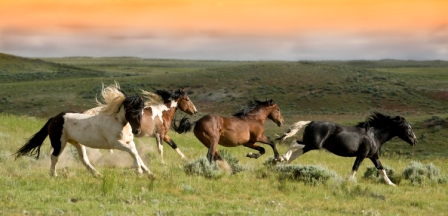Feral cat policy challenged in court

The
controversial cat-management strategy known as trap-neuter-return (TNR)
faces a legal challenge in Albuquerque from longtime animal activist
Marcy Britton, who is in court over the city’s support of TNR as a way
to control the feral cat population.
Britton and her advocacy group, Justice for Animals, say the practice
of neutering feral cats and returning them to the streets amounts to
abandonment and animal cruelty. “I have actually seen the horror of what
these animals suffer,” she told us, noting that she lives by a feral
cat colony near Winrock Mall populated by pregnant, diseased, and
injured cats. “They get hit by cars, there’s no follow-up veterinary
care. One cat had a dental abscess and was starving to death. There a
lot worse things than euthanasia.”
The city works with animal advocacy groups such as Animal Humane New
Mexico that trap and sterilize street cats before returning them to
their colonies. Animal Humane, which introduced TNR to Albuquerque in
2008, strongly defends the practice.
“TNR works,” says Executive Director Peggy Weigle. “Over time, with
fewer free-roaming cats breeding, the unowned cat population is reduced.
And with fewer cats loose in the community, the cats are healthier,
since there is more food to go around and less fighting.” Weigle notes
that Animal Humane saw a 32 percent drop in kitten intakes in the period
2010–2013, and 80 percent of kitten intakes are strays. Feline
euthanasia at Animal Humane dropped 69 percent in the same period.
Britton challenges the conclusion that feral cat populations are
decreasing, and says she objects to TNR even if they are. “A municipal
pound is not required to lower (mortality) statistics,” she said. “Even
if the shelter isn’t euthanizing as many animals, the streets are.” Her
mission, she says, is to “stop suffering, not keep them alive for six
months so they get killed by something (else).” Her petition claims TNR
violates state and city laws prohibiting animal cruelty.
The city responded to Britton’s petition last month by saying the
practice does not violate any laws, has the support of nationally
recognized experts such as the Humane Society and ASPCA, and that the
cats are not being abandoned because they do not belong to anyone.
The case awaits a court date.
While TNR is advocated by the “no-kill” animal movement as the only
humane way to manage cat overpopulation, it is strongly opposed by bird
and wildlife groups. The Audubon Society, PETA, and Wildlife Society are
among wildlife advocates that say the practice helps sustain a
non-native predator that is decimating native wildlife (see “Cat vs. Bird,” April/May 2013).
March elections include animal issues
Voters in the Corrales and
Rio Rancho municipal elections next month face some choices that could
have important consequences for homeless animals in their towns.
Corrales
in 2014 will decide which projects to fund with municipal bonds being
issued to tap sales tax revenue. While some Village leaders see an
opportunity to fund a beleaguered sewer project, animal-rescue groups
have already started lobbying for a municipal animal shelter. They say the Village will not be
able to comply with its no-kill ordinance for much longer without a
city shelter.
None of the mayoral or council candidates has indicated
where they stand on the project, though some are clearly opposed to
funding the sewer.
Christine Allen and Scott Kominiak are vying for
mayor of Corrales, after incumbent Phil Gasteyer chose to run
(unopposed) for Council District 3. Two council seats are in play in
Corrales: District 1, which pits incumbent Ennio Garcia-Miera against
Tom Brown; and District 4, where incumbent John Alsobrook faces David
Domburg. Both Council incumbents have been generally supportive of
animal causes in the Village. Their opponents’ views were not known at
press time.
IN RIO RANCHO, four candidates are vying to replace Mayor
Tom Swisstack, and three Council seats are in play, each with two to
four candidates.
Rio Rancho made animal news in 2012 when the Tea
Party-led Council overturned a highly praised animal ordinance that had
been passed a year before and developed in an 18-month task force
process. Among the most controversial changes were lifting a ban on
selling puppies and kittens in pet stores, and allowing circuses that
have violated federal animal codes to perform in the City of Vision.
Little
was known at press time about the Council candidates, but one
incumbent, Tim Crum in District 5, was among those who voted to overturn
the animal protections. Incumbent Tamara Gutierrez in District 3
opposed the change, and has been sympathetic to animal welfare causes.
Of
the mayoral candidates, Morgan Braden’s web page describes him as a
political conservative who owns a hot-air balloon and Jeep tour company.
Gregg Hull until recently owned Certified Packing & Crating. Both
prioritize job creation and public safety, and oppose higher taxes.
Jim
Owen and Mike Williams both served as mayor before, Owen in 2002–2006,
and Williams as interim mayor for nine months in 2007–2008; he served on
the City Council for 12 years after. Owen would emphasize ethics reform
in Rio Rancho. Williams has said he will focus on getting government to
work better for the good of the city.
It is not known where any of the candidates stand on restoring the animal welfare protections.
MEANWHILE, SANTA FE animal advocates, led by Council member and mayoral candidate
Patti Bushee, are working to get an anti-tethering ordinance passed in
the City Different. The proposal would ban stationary tethers, but still
allow tethers attached to a trolley.
The City Council has scheduled a
public hearing on the proposal Feb. 12, and it is unclear when the
final vote will be taken. But Santa Fe also has municipal elections in
early March, and four of the seven mayoral candidates are currently
serving on the Council.
According to Ben Swan, public information
officer for the Santa Fe Animal Shelter & Humane Society, Councilor
and mayoral candidate Javier Gonzales, along with Bushee, has been a
supporter of animal causes in the past.

